Showing reports 1 - 10 of 172 in category :
| 10 Years of Research: Risk Assessment, Human and Environmental Toxicology of Nanomaterials | |
| Source: DECHEMA – Publication date: November 2011 | |
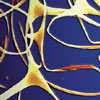 | Experts from industry and research institutions have compiled 60 pages with the current status of safety research and give an overview on national and European projects on safety research of various nanomaterials for humans and the environment. The researchers point out that the size label "nano" does not represent an intrinsic hazard characteristic; instead, the impact of nanomaterials depends on other factors as well, such as the nature of the material. However, newly developed nanomaterials have to be submitted to a risk assessment just like any other new product. The researchers call for an adequate infrastructure in toxicology research and education in order to enable a continuous safety research based on high quality and international research standards. |
| 2002 CNSI Annual Research Report | |
| Source: California NanoSystems Institute (CNSI) – Publication date: November 2002 | |
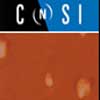 | The California NanoSystems Institute 2002 annual research report includes summaries of the latest nanotech work funded by the state of California |
| 2005 CNSI Annual Research Report | |
| Source: California NanoSystems Institute (CNSI) – Publication date: November 2005 | |
 | The California NanoSystems Institute 2005 annual research report includes summaries of the latest nanotechnology work funded by the state of California |
| 2006 CNSI Annual Research Report | |
| Source: California NanoSystems Institute (CNSI) – Publication date: November 2006 | |
 | The California NanoSystems Institute 2006 annual research report includes summaries of the latest nanotech work funded by the state of California |
| 2020 Vision for the Future of Nanoelectronics | |
| Source: European Commission – Publication date: June 2004 | |
 | A group of top-level executives from European industries and research organizations has prepared this report, highlighting the key importance of ensuring advanced research and high-value manufacturing capabilities in Europe. The key recommendation is the creation of a Technology Platform to strengthen collaborative research, create a more favourable regulatory and financial environment, and offer a course of action to back winners in this key sector. |
| A Matter of Size: Triennial Review of the National Nanotechnology Initiative (2006) | |
| Source: National Materials Advisory Board – Publication date: 2006 | |
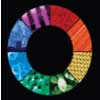 | Requested by Congress, this report of the National Research Council's Committee to Review the National Nanotechnology Initiative is an evaluation of the NNI that also considers the current economic impact of nanotechnology and benchmarks the international standing of U.S. nanoscale research and development. In addition, the report addresses the responsible development of nanotechnology and comments on the feasibility of molecular self-assembly for manufacturing. |
| A Research Strategy for Environmental, Health, and Safety Aspects of Engineered Nanomaterials | |
| Source: National Research Council – Publication date: January 2012 | |
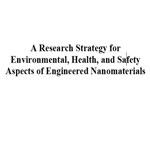 | Despite extensive investment in nanotechnology and increasing commercialization over the last decade, insufficient understanding remains about the environmental, health, and safety aspects of nanomaterials. Without a coordinated research plan to help guide efforts to manage and avoid potential risks, the future of safe and sustainable nanotechnology is uncertain, says a new report from the National Research Council. The report presents a strategic approach for developing research and a scientific infrastructure needed to address potential health and environmental risks of nanomaterials. |
| A Tiny Primer on Nano-scale Technologies ...and The Little Bang Theory | |
| Source: ETC Group – Publication date: June 2005 | |
 | A basic introduction to nanotechnology and its implications by the ETC Group (or Action Group on Erosion, Technology and Concentration). ETC is dedicated to the conservation and sustainable advancement of cultural and ecological diversity and human rights. To this end, ETC Group supports socially responsible developments of technologies useful to the poor and marginalized and it addresses international governance issues and corporate power. |
| Agricultural, food, and water nanotechnologies for the poor | |
| Source: International Food Policy Research Institute (IFPRI) – Publication date: January 2011 | |
 | There are a number of potential opportunities associated with agricultural, food, and water nanotechnology for the poor, but to achieve such opportunities a number of challenges need to be overcome. This paper first provides a rapid assessment of key technologies that could have a large impact on the poor via increased agricultural productivity, improved food and water safety, and nutrition. Second, it reviews some of the main challenges to their deployment and adoption by the poor. It concludes with a discussion of the potential role of the CGIAR in facilitating the poor?s access to beneficial nanotechnologies. |
| An Introduction to Electron Microscopy | |
| Source: FEI – Publication date: October 2010 | |
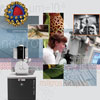 | This booklet is a primer on electron and ion beam microscopy and is intended for students and others interested in learning more about the history, technology, and instruments behind this fascinating field of scientific inquiry. The goal of this booklet is to provide an overview of how electron and ion beam microscopes work, the results they can produce, and how researchers and scientists are using this data to address some of the greatest challenges of our time. Most of the stunning nanoscale images displayed in this booklet have been colorized for visual effect and artistic impression. |
[First Page] [Prev] Showing page 1 of 18 pages [Next] [Last Page]
